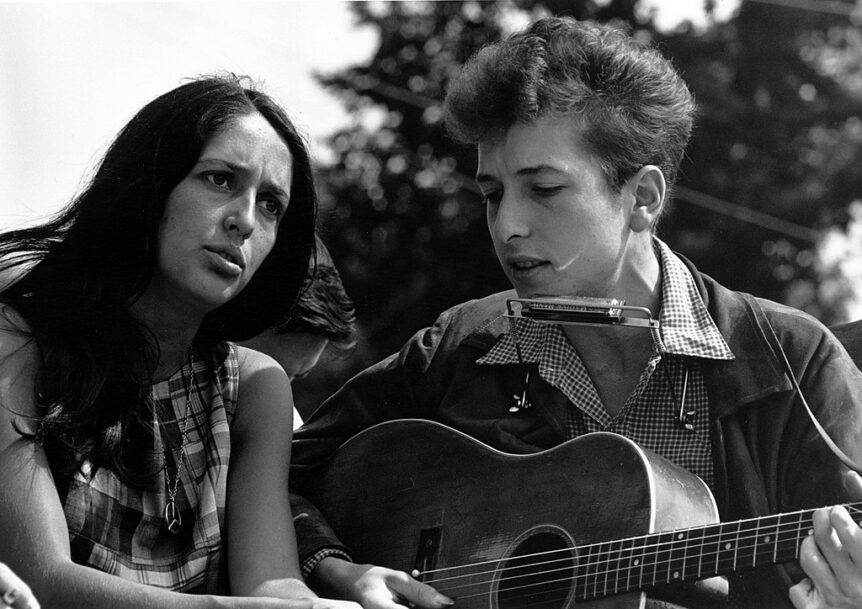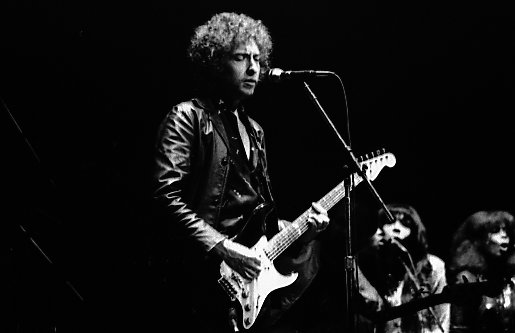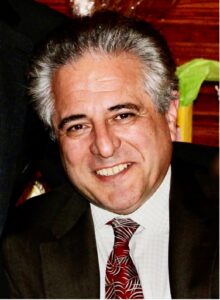
“I Was So Much Older Then, I’m Younger Than That Now”
By James Banakis
February 7,2025
Maybe like me you’ve noticed that John Kass has so adroitly weaved Bob Dylan references into some of his recent columns. When I recognize them, I smile to myself because they always seamlessly provide the picture-perfect image in the reader’s mind. Dylan’s images shock the listener because they’re so rich, multilayered, and unexpected but true. It’s why he won the Noble Prize for literature. Dylan… not Kass.
I recently saw the excellent biopic “A Complete Unknown.”
The film traces a 19-year-old Bob Dylan arriving in New York in 1961 where he turns the American music and literary culture on its head. In my favorite quote from the film, the Dylan character laments,
Everyone asks where these songs come from, Sylvie. But then you watch their faces, and they’re not asking where the songs come from. They’re asking why the songs didn’t come to them.
I’ve been a Dylan fan since a high school girlfriend played her new album, “Bringing It All Back Home” for me. The first song and lyrics that I really listened to was “Like a Rolling Stone.”
Bruce Springfield once said that the first time he heard that song he was thrilled and frightened at the same time. I think a lot of us felt the same way. That’s because the words and images cascade down on the listener so quickly and unexpectedly.
We feel like cavemen witnessing fire for the first time. The question is, “where did this come from?” In an interview on 60 Minutes,
Dylan claims with all sincerity, he doesn’t know where those songs came from. They just came into his mind. To me, this is just one of those wonderful mysteries of life that cannot be explained and really doesn’t need to be. It is for us to marvel at them and enjoy them and be thankful to be in the same lifetime with such an artist.
It must have been how people during the renaissance felt viewing 23-year-old Michelangelo’s Pieta. Some of life’s mysteries are complex and some are simple. All wait to be discovered.
Right about now, I’m sure many of you are thinking, “Come on Jimmy, slow down. Dylan is just a guy with a gravelly voice always singing about unrequited love. My response would be seemingly that’s true, but that you haven’t allowed yourself to visualize the images. Images that are gifts and depending on our perspective, give unique experiences for each of us.
Many years ago, at our annual book fair at Holy Apostles, our featured speaker Bishop Timothy Ware from Great Britian asked me if it were possible for me to take him to the Art Institute. Bishop Ware erudite, deeply spiritual, yet completely relatable was one of the most unforgettable persons I have ever encountered.
Of his many gifts, his most precious was that he witnessed everything in life with the wonder of a caveman. Now I have been to the Art Institute many times before so I thought I could do a somewhat credible job of guiding him throughout the galleries. I was wrong.
I floated through with him witnessing every piece of art through his eyes and inspiration. I saw everything anew for the first time. Keep in mind, the good Bishop wasn’t trying to teach me anything or even converse with me. He was too immersed in the art.
I was just in his presence as he spoke to the paintings aloud. He’d stand in front of a painting for several moments and then as if addressing the artist say, “Ah Picasso, where is that light coming from? Oh, I see it’s within her.” Before anyone thinks the old guy was high on hashish. Defiantly not.
He just had a unique transcendent way of viewing the world around him. After we had dinner at the Pump Room, and he was the same way with food. Attacking it gracefully with wonder and contentment.
The lesson I learned from that milestone day was best simply summed up by Nikos Kazantzakis,
I said to the almond tree, “Friend speak to me of God; and the almond tree blossomed.
There is a magical scene in “A Complete Unknown” where a very young Al Kooper aching to get involved in the recording of “Like a Rolling Stone,” impulsively jumps on the keyboards and improvises the now famous intro organ refrain. Sometimes art is a collaborative effort. Maybe it’s even contagious.
Throughout the film Dylan enters relationships with musical icons, the most significant being a then already famous Joan Baez. At one point Baez asks Dylan what he thinks of her songs, and he says they remind him of an oil painting in a dentist’s office. The audience understands the truth yet feels Baez’s humiliation. Dylan was just in a different stratosphere than any other songwriter. His lens is special. His filter nonexistent.
I had a friend who booked concerts at the Aksarben Auditorium at the University of Nebraska. Occasionally I’d show up to see what was going on, and at such a time I watched Joan Baez doing sound checks in a deserted venue.
This was in the late 60’s and I remember being underwhelmed thinking of her small and ordinary, a much older woman, and in my immature mind, being sort of washed up, not relevant. Of course I was wrong. Since seeing the film I’ve gone back and listened to most of Baez’ recordings. They’re magnificent. The young woman who plays Baez, Monica Barbaro, was hypnotizing. I’ve always had a personal test of an actress’s performance in film. If during the movie I find myself falling in love with the lead actress, it’s either great writing or a believable acting performance.
For me, the first time it was Donna Reed in “It’s a Wonderful Life.” Happily, it happens to me a lot, and I gladly surrender to it.
Most films and documentaries about Bob Dylan I’ve found to be disappointing, and I was ready to be dissatisfied by this one, but it was not the case. “A Complete Unknown” culminates in the groundbreaking performance at the 1965 Newport Folk Festival.
It was a concert that changed the world forever. As in most significant performances the performer is far ahead of his time, confusing and disturbing most of the audience at Newport.
The real charm of this film is that from our 60-year perspective of witnessing Dylan and him providing the soundtrack of many of our lives we see ourselves then and now. Good filmmaking can transport us like a time machine.
I began writing this afternoon after reading John’s excellent column on “The Masters of War.” And listening to some of Dylan’s music.
I was stuck by how his songs have always reflected stages of my own life and experiences. I’m sure many of you feel the same way. The last album I heard today was one of the early ones written at the same time period of this important film, Another Side of Bob Dylan”. The album contains my personal favorite song, “My Back Pages” and my favorite line. It was the closing song of Dylan legendary 30th anniversary concert on October 16.1992, in Madison Square Garden.
While that was an epic rendition, I’ve always preferred the original. It always forces me to feel good about looking back.

-30-
 Jimmy Banakis is a life-long restaurateur. He was an honorary batboy for the White Sox in 1964. He attended Oak Park River Forest High School, Nebraska Wesleyan University, and Chicago-Kent Law School. He claims the kitchen is the room he’s most comfortable in anywhere in the world. He published an extremely limited-edition family cookbook. He’s a father and grandfather, and lives in Downers Grove Il.
Jimmy Banakis is a life-long restaurateur. He was an honorary batboy for the White Sox in 1964. He attended Oak Park River Forest High School, Nebraska Wesleyan University, and Chicago-Kent Law School. He claims the kitchen is the room he’s most comfortable in anywhere in the world. He published an extremely limited-edition family cookbook. He’s a father and grandfather, and lives in Downers Grove Il.




Comments 26
As usual, a great read!
Thumbs up! Thanks!
Jimmy and John, What a beautiful and amazing story!! I’m in my 70s now and this column took me back to my years growing up on a farm in Indiana. I’ve always loved listening to Dylan and getting lost in his lyrics and his music!! My wife and I often speak of our amazing lives growing up through various decades of wonderful music and musicians!! I recall listening to the radio and telling my mom about the great lyrics, only to have her tell me that the song was very old and something that she loved. Amazing how these songs come back years later. Jim and Cyndy Hallar
Thanks for writing this, Jimmy. I always thought “My Back Pages” was the perfect title of anyone’s autobiography. It is a perfect description of all of our lives, reflecting back. Bob’s words always captured me that way. What I find amazing about Bob is there is so much there in his art to dive deep into. As I grow older, I’ve grown to understand what an amazing journey he’s captured in his songs about being Born Again and how that doesn’t seem to deviate from his roots as a Jew and that adds layers to his spiritual path. That journey would not only make a great movie but perhaps make people wonder, like me, if he’s a gift from God to us.
Well done Jimmy.
I loved that movie! The cast was perfect and the young lady playing Joan Baez was phenomenal. I especially liked Ed Norton’s portrayal of Red Commisar Pete Seegar, in life a repellant person, but Norton made him somewhat human.
Great review of a brilliant film, Jim!
Listening to Dylan’s songs now that I am almost 70 mean so much different to me than when I was younger. The nuances are stronger. Fav is “shelter from the storm,” from my fav album.
I saw Dylan in 1997 at Illinois Benedictine’s gym, Lisle. Great setlist and even better performance confirmed by my friend who had seen him numerous times. Imagine an icon like him giving it his all in a college gym.
For the record, I have seen Styx in Brother Rice’s gym in the 70’s and Bruce Springsteen at Northwestern’s old gym in 11/78.
I was going to high school outside of NYC when all the history in the movie was being made. We would go into the Village and check out the folk scene. I had a friend who memorized all of Dylan’s songs as they came out. I went to the Newport Folk Festival in 64 and saw Dylan from the rear doing an informal workshop. It was impossible to get a seat facing him because the ground was covered with reverent fans.
Dylan was what he described as a “Woody Guthrie Jukebox” in those days except he was ten times more talented and poetic. He was also a youthful dynamo. His output was unprecedented. The songs just came out of him like water from a fire hose. I sometimes think he was on amphetamines, which were popular at the time. I remember hearing Kennedy was taking them.
After mastering and memorizing the folk canon, he turned on the fire hose and used the folk establishment to blaze his trail to glory with his mesmerizing songs. But he was always a rock n roll guy who loved Little Richard and the old bluesmen. He was a musical sponge. When he tired of the folk scene and its political demands on him, he joyfully went back to rock n roll or rhythm and blues, or folk/rock or whatever you want to call it. It was all those things.
The break with folk came earlier in 1963 at Silas Magee’s Farm in Mississippi when Seeger forced Dylan to travel to Mississippi and perform at a voter registration drive shortly after Medgar Evers was assassinated. Dylan drove from California without sleeping for two days and was obviously not thrilled to be there. Mississippi was a dangerous place because of the KKK and Dylan felt he was being used. This episode in his life gave birth to the song, Maggie’s Farm, which Dylan performed in punk mode at Newport in 1965 to a cascade of boos and the contempt of many of his fans. It was his declaration of independence and artistic emancipation.
Having witnessed the real thing, I’m debating whether to go to the movie.
Nice. Thank you. I think it’s true that it doesn’t matter where it came from, just take it in and think about what it means to you.
As an aside, my beloved Golden Retriever was named “the Mighty Quinn.”
100% “I was stuck by how his songs have always reflected stages of my own life and experiences.” I’m a Dylan fan but his body of work is so prolific that I had not yet listened to “My Back Story” until today, so great to learn of it here. I also agree that you have to allow yourself to visualize the images he presents. Blood on the Tracks is my personal favorite. Thank you for a fun read to start the day right.
Been a big fan of Dylan’s since the ’60s. Among my favorites are his many longer ballads. My wife and I have CDs we listen to over and over in the car. On one is the mysterious “Brownsville Girl,” (“The only thing we knew for sure about Henry Porter is that his name wasn’t Henry Porter). We laugh and talk all the way through it. Usually, I will ask “What is this song about?” We really don’t know. The imagined ideal lost love. The West. The movies. The “sun coming up over the Rockies”? Who knows? On the other hand, there are songs like “Neighborhood Bully” that are as true and crystal clear as today’s headlines as they were the day he first thought up the words.
I grew up with Dylan playing in my brothers room, they skipped Zeppelin and STYX and the other bands, of the time. I was bathed in Little Feat, Dylan, Bromberg and Hendrix. I went to see Dylan no less than 6 times in the early 80’s to the 90’s. Every concert was in his down turns. I kept missing when he was clean and healthy. I love his music, but he owes me about $15 X 6 ( maybe more, can’t remember if my girlfriend went Dutch ).
Thank you Mr. Banakis. I, too, enjoyed “A Complete Unknown” but for me it was a revelation as I was too young to appreciate Dylan’s music. Thankfully, I hope to have the time now to run through his complete catalog.
PS Small thing; it’s not Bruce Springfield, but I believe it was Bruce Springsteen who made the comment.
Thanks for catching that. You’re correct. It was supposed to be Bruce Springsteen.
I had the opportunity to see Dylan last September in Tinley Park and still an thankful for it. A younger companion was able to bring up the playlist on his phone which added greatly to the performance as Bob paid tribute to various musical artists. He did give a special verbal thanks to Chuck Berry.
Indeed Dylan’s music was something special! My favorite singer/songwriter is more local. John Prine, whose songs bring us lives of the common man, that bring us tears, laughs, nods of “I know how that feels” etc. John grew up near me in Maywood, Illinois. I went to school with him, had lunch with him a couple times on his mail route, and went to many of his performances. My favorite.
I’m reluctant to watch this movie as I have also been disappointed in earlier movies and documentaries on Dylan but given the enthusiastic reviews I’ve read on johnkassnews.com I’m sure I will. I just hope it doesn’t disrupt the images I have of Bob arriving in New York on the Mayflower and the adventures he had with Captain Arab as described in Dylan’s “115th Dream”. ( from his “Bringing It All Back Home” album. )
https://youtube.com/watch?v=kbdF4hBfQiE&si=4529WGAA-1r-pP0v
This was a fun read! It made me take my coffee into the office and dig out an old friend off the shelf: “Written in my Soul” … a series of interviews with a some of Rock’s great songwriters – conducted and compiled by the insightful Bill Flannigan. And the same truth seems to emerge again and again – that these great songs are quite literally “channeled” through them; as if the artist is a radio transmitter and is ready, willing and able to recognize and capture something that is omnipresent.
Great article. Prompted me to look up a concert on April 28, 1976 at a field house at the University of West Florida in Pensacola where Dylan and Joan Baez performed in basically a gym.
It was small, intimate, and even sitting on bleacher seats it was great.
Good one Mr. Benakis. Dylan was and is in a class by himself. Asking him how he gets his songs is like asking Beethoven how he thought up his symphonies or Shakespeare his plays. It’s weird that people seem to look for some justification for liking great art. Of course great art speaks for itself.
Dylan’s songs need no proof. Dylan is a year older than me. His genius expressed our age.
I’m sorry Mr. B., but I just don’t share your enthusiasm for either Dylan or Baez. I could never handle Dylan’s voice, although The Byrds’ version of My Back Pages was at least listenable. As for Baez, two things stand out in my memory, neither one of them good. One was the late great cartoonist/satirist Al Capp, who depicted Baez as “Joanie Phoanie” in the panels of L’il Abner. The other was the devastating parody recording “Pull The Tregros” done by the National Lampoon staff on their album Radio Dinner.
One more lyric, this time from Paul Simon:
“…he’s so unhip when you say Dylan
He thinks you’re talking about Dylan Thomas, whoever he was
The man ain’t got no culture
But it’s alright, Ma! Everybody must get stoned”
From “A Simple Desultory Philippic (Or How I Was Robert McNamara’d into Submission)”, circa 1966.
Thanks for the link to the performance of “My Back Pages” on YouTube. What a great song, and what a cast of performers – George Harrison, Eric Clapton, Roger McGuinn, Tom Petty, Steve Cropper, etc.
I’m definitely in the minority here, as I was never a big Dylan fan. I like a few of his songs, but he was always one of those artists, like Springsteen, that we were SUPPOSED to like, according to the musically correct crowd. If one doesn’t like either of those two, you’re regarded as a philistine, and I’m ok with that.
I sang in choirs all through elementary and high school, and I was taught to appreciate a beautiful voice, melodies, harmonies, syncopation, beat, and yes, lyrics. Dylan has some great lyrics, but but I’d rather read them than hear him croak them out.
I do like Positively 4th Street, probably because I know so many people to whom those lyrics apply.
To each their own.
Moderate Dylan fan. Positively 4th Street, yes has great, very relatable lyrics. I’m partial to “Blind Willie Mctell” one of his lesser known songs, back when Dylan’s voice was strong.
We adopted a Golden Retriever from Save a Pet in 2000. He already had a name, Quinn. We called him the Mighty Quinn. Lived to be 15.
Many people dislike him because of his voice, my wife included. But as I explained to her it was his lyrics and how they weaved a story that each of us picture differently she finally got it. Some of my favorites are Tangled Up in Blue, Foot of Pride, Lord, Protect My Child, and too many to list.
As for many of us, famous or not, we are all given a talent by God. It might not pay handsomely, but remove each person and his/her talent & body from this earth and we see that all of us have worth to each other.